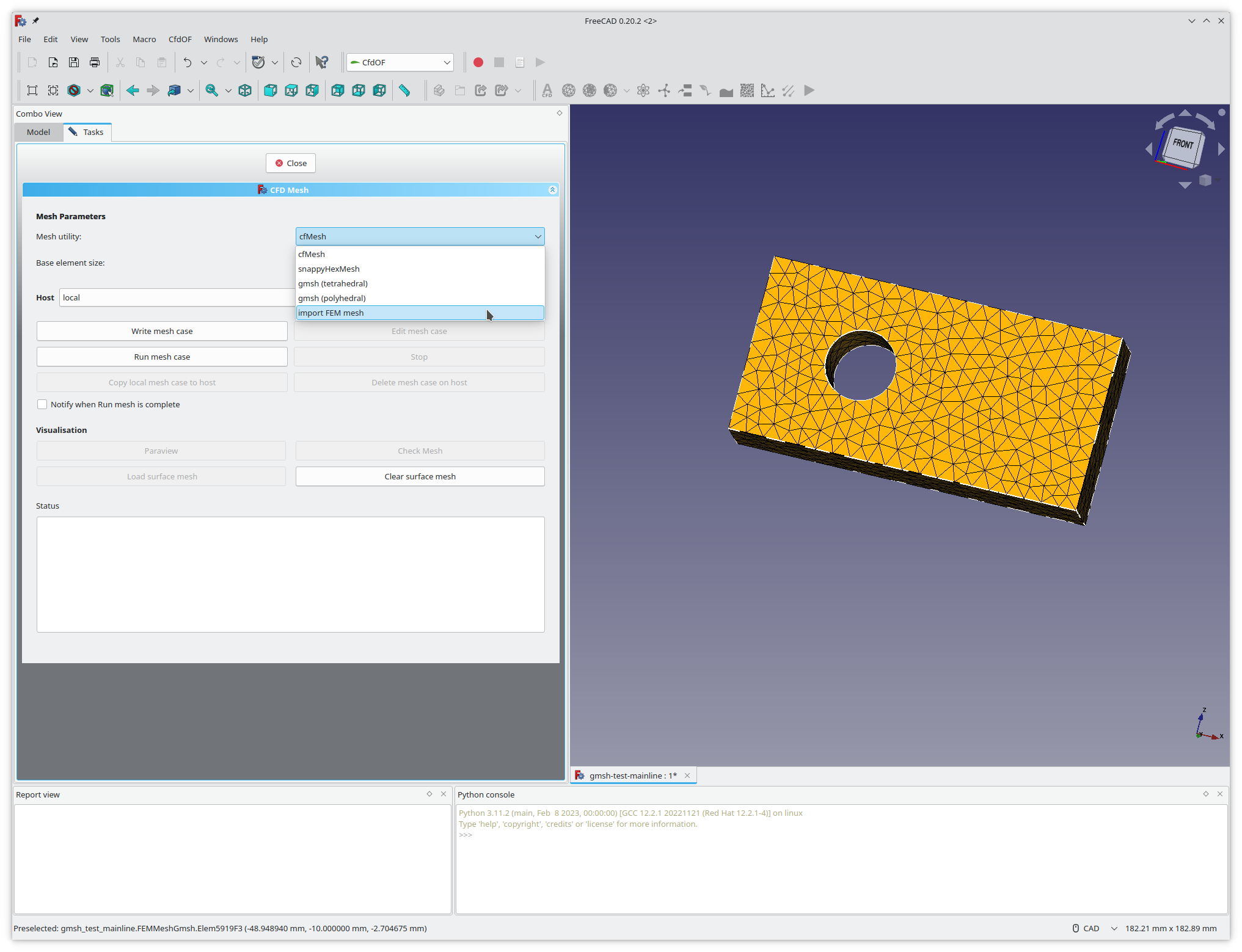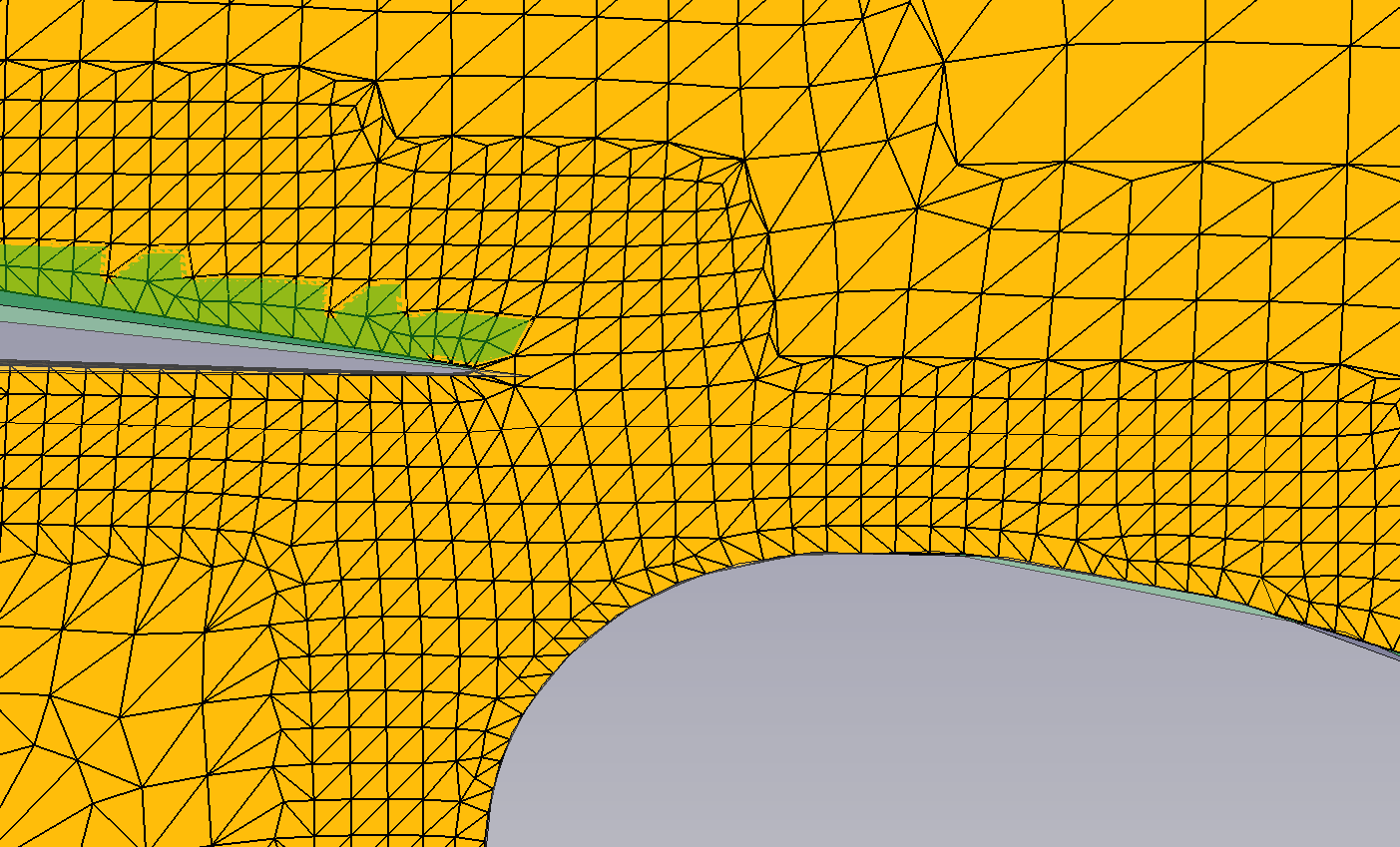Should we have a different mesher object for each meshing tool ? One for each of gmsh, cfmesh and snappyhexmesh ?
I say this because the parameter list for each one is very different if we start enabling different options. As are sub mesh objects like refinement volumes, surface meshes, etc.
A generic mesher object has worked until now but use cases like enabling surface meshing for gmsh are going to break that compatibility. SnappyHexMesh has a lot of options too. Currently only a few are displayed for the user to use.
I could leave the existing CfdOF meshing code base alone and add a dedicated gmsher object as a trial. I should be able to borrow a lot of the code from the FEM workbench. If my trial works out, we can migrate the other meshers to their own mesh object later.
The other advantage to this approach is that the user could set up 2 different meshers for a project without losing the settings when changing back and forth between them. The user could select which mesh to use by changing the mesh object in the solver.
The other thing about changing to dedicated mesher objects is that in the future we could implement a dynamic mesher object, that generates dynamic meshes.
Thoughts ?



I'm finding cfmesh and snappyhexmesh to be inadequate for my CFD needs.
People doing CFD work on parts with fine edges need a very fine mesh around these surfaces in order to get accurate results. While mesh refinement areas for cfmesh and SnappyHexMesh are great in certain use cases, it is very difficult to build a mesh from the outside in with sufficient fineness at the areas of concern on some models to get good results.
An example of this issue is the trailing edge of aircraft wings. While cfmesh can generate a somewhat fine grid on these areas, it does this at the expense of a huge number of mesh cells, very long meshing time and still a rather poor mesh outcome. SnappyHexMesh has the same issue.
Another hard to mesh item is heat exchanger fins.
This is about the best mesh I've been able to accomplish with cfmesh.
By contrast, this is what a really good aircraft trailing edge mesh looks like:
Gmsh is capable of generating boundary meshes of this quality and even better.
The surface cell width in this example was limited by the data points used to generate the profile. Had the user used a spline instead of discrete points, the cell width could have been finer. Gmsh allows one to specify the starting size of the cells used on the boundary, the number of layers and the size progression of the layers.
The FEM workbench uses gmsh as their primary meshing tool and already supports boundary layer meshing. I think that CfdOF should also support boundary layer meshing via gmsh.
I am thinking of adding gmsh boundary layer meshing to CfdOF.
Right now the CfdOF Mesh Object holds generic meshing parameters used by all the meshers.
By contrast, these are the mesh parameters for gmsh used in FEM.
I don't think we want to just add all the gmsh parameters to the existing mesh object parameter list. But I may be wrong. On the other hand, I don't want to tear apart a bunch of existing code and reinvent the wheel.
Thoughts, advice, ideas ?
Necessity is the mother of invention (development). I need to generate meshes for a bunch of CFD work, ASAP. I'm torn between implementing gmsh boundary layer meshing in CfdOF and trying to make the FEM mesher work with my CfdOF projects.
I look forward to your input.